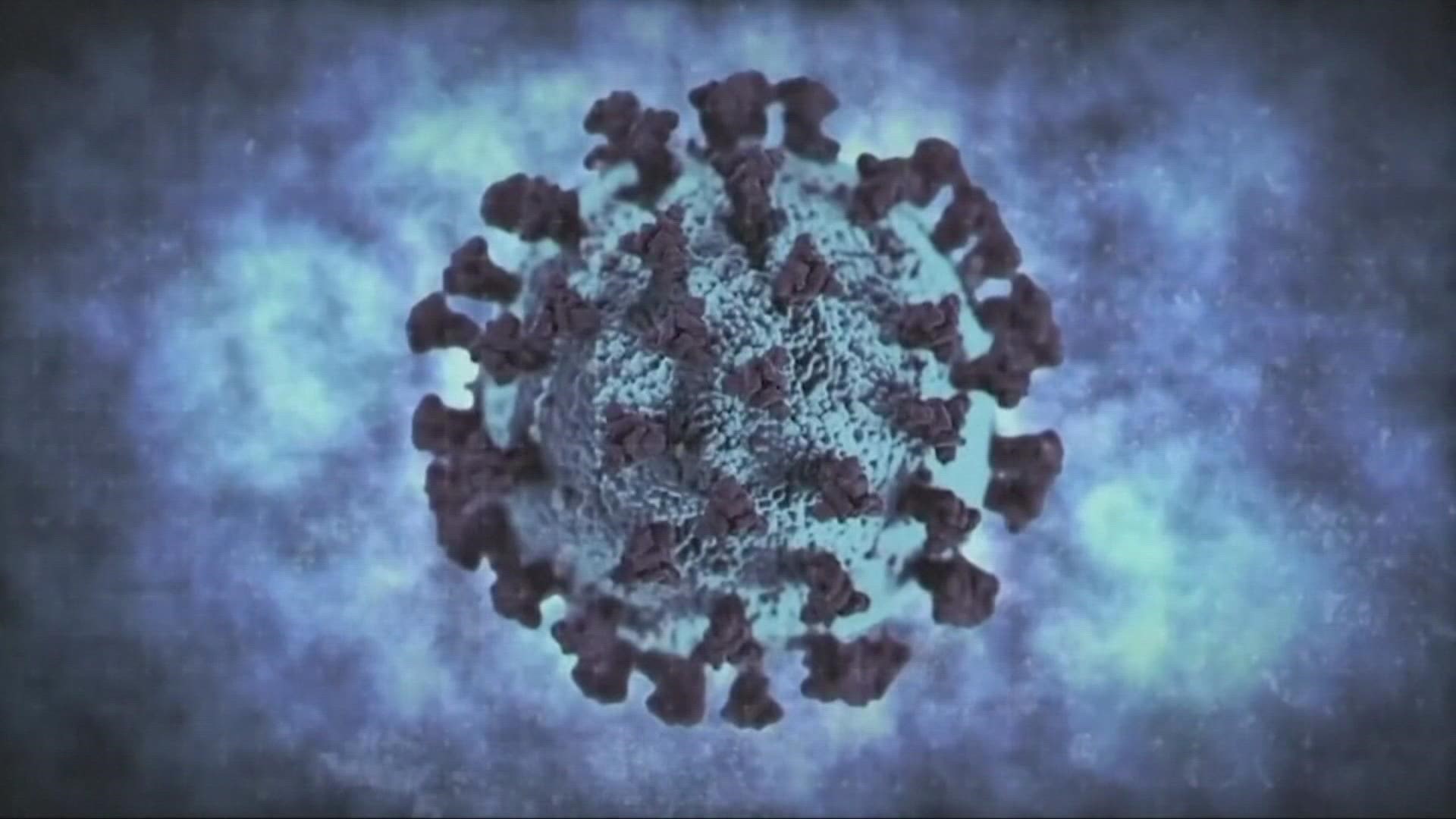CUYAHOGA COUNTY, Ohio — So far, April has brought an increase in COVID cases around the country. Wednesday President Biden extended the nation's public health emergency for another 90 days.
The federal transportation mask mandate was also extended to May 3, 15 days beyond the previous expiration date.
“Since early April, there have been increases in the 7-day moving average of cases in the U.S. In order to assess the potential impact the rise of cases has on severe disease, including hospitalizations and deaths, and health care system capacity, the CDC Order will remain in place at this time," read a statement from CDC spokesperson Caitlin Shockey.
Nearly all of Ohio appears low risk in current CDC guidance.
“We're in good shape here in Cuyahoga County,” said County Executive Armond Budish during a health briefing Thursday. “Our COVID positivity numbers are nearly the lowest they've been in a long, long time.” You can watch the briefing in the player below.
One theory on the increase of cases in the Northeast says those areas were part of the early omicron surge, meaning immunity from vaccinations and prior infections may have waned more than in other places. Cuyahoga County was hit early with omicron, too.
Exactly a month ago, the state changed from daily COVID reporting to its weekly Thursday updates. Some critics say weekly numbers coupled with more at-home testing that never appears in public data, mean it's more difficult to gauge where we're headed.
That's where wastewater monitoring comes in. A surge of viral load measured in sewage can foreshadow community spread, like areas of the nation’s northeast have been noting for weeks.
“If we see a big outbreak and maybe we didn't see it in cases yet, we can target resources in the area of the state,” said Dr. Zuzana Bohrerova. She’s the lead researchers at OSU’s Ohio Water Resources Center. “You can see the virus’ RNA in the wastewater, and you can estimate the prevalence in the community from that. And it's also early indicator, definitely of hospitalizations,” she said.
Bohrerova interprets data from 70 sites around Ohio, including the Northeast Ohio Regional Sewer District. It’s Easterly plant noted an uptick greater than 1000-percent at last report on April 7. New data is expected Thursday afternoon. Bohrerova says the numbers can be sensitive to events, and must be taken in context with other coronavirus data to be useful.
This type of wastewater testing has been in place since the summer of 2020, but in an endemic stage, the biweekly monitoring, and the ability to sequence the virus to identify new variants, has new importance.
“It's this snapshot into the community,” said Bohrerova. “It's being uploaded to [the Ohio Department of Health] every day. They get the data and, if they need to, send alerts,” she said. Those are reported back to local health districts.
Cuyahoga County’s Board of Health says those spikes occur two to four weeks prior to a spike in community case spread.
To stay vigilant, the county is also putting daily focus on clusters of cases in schools, daycares, nursing homes.
“We’re paying more closer attention to clusters and outbreaks that may be occurring throughout the community,” said Jana Rush, director of epidemiology, surveillance and informatics. “If we see pockets of cases, we’re tracking that on a day to day basis to see where those are occurring so we can implement methods pretty quickly to ensure we are able to limit the spread further.”
The wastewater monitoring isn’t brand new. It was used in developing countries in the 1980s to measure polio eradication. But Bohrerova says it’s never been used for public health intervention on such a large scale.
She says Ohio is currently looking at expanding the technology for influenza monitoring, which could start in some communities as soon as this fall. The CDC is also recommending other uses for measuring other respiratory disease rates and the prevalence of so-called super bugs, or bacteria resistant to antibiotics.
Here’s the most recent weekly COVID data in Ohio provided for the last four Thursdays:
- March 17: 3,605 new cases
- March 24: 3,668 new cases
- March 31: 3,103 new cases
- April 7: 3,828 new cases
While Ohio’s cases have held steady for the last several weeks, some regions of the country are now seeing a rising number of new infections once again. Philadelphia, for example, has decided to reinstate its indoor mask mandate as a result of growing case rates, becoming the first major city in the United States to do so this spring.

